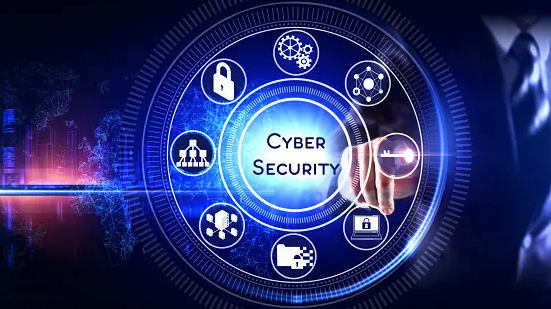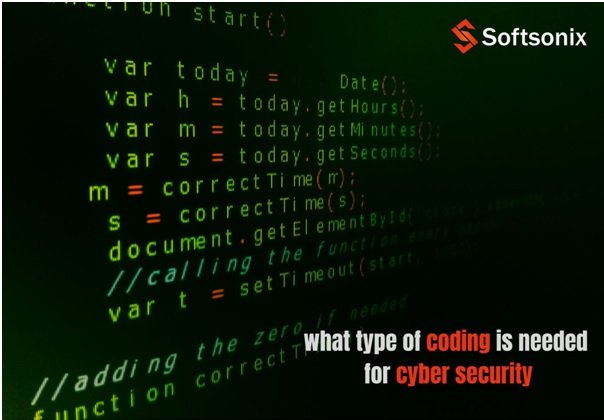Top cybersecurity interview questions with answers

Credit - Pixabay
This article discusses important cybersecurity questions, covering cryptography, IDS vs. IPS, the CIA Triad, encryption, firewall, common threats, and more. Whether you're an expert or new to the field, these brief answers aim to improve your interview performance.
Cybersecurity is the only domain in IT that has not faced a recession yet. There is demand and competition to get a job in cyber security you have to be one of the best. While having the necessary cyber security skills is half the job, succeeding in an interview is another chapter altogether. To help you ace a cyber security interview, we have prepared this list of top cyber security interview questions and answers.
1. What Is Cryptography in Cybersecurity?
Cryptography is the practice and study of techniques for securing information and communications to keep data safe from third parties for whom the data is not intended.
Also Read -
2. What is the difference between IDS and IPS?
IDS is an intrusion detection system and it only detects intrusion and the administrator has to take care of stopping the intrusion. At the same time, in IPS i.e. Intrusion Prevention System, the system detects intrusion and takes action to stop intrusion.

Credit - Pixabay
3. What are the three goals of cyber security?
CIA stands for Confidentiality, Integrity, and Availability. The CIA is a model designed to guide policies for information security. This is one of the most popular models used by organizations.
a. Confidentiality
Confidentiality says that information should be readable and accessible only to authorized personnel. It should not be accessed by unauthorized personnel. If someone uses hacking to access the data then the information should be strongly encrypted so that even if the data is accessed, it is not readable or understandable.
b. Integrity
Ensuring that the data has not been modified by any unauthorized entity. Integrity ensures that data has not been corrupted or modified by unauthorized personnel. If an authorized person/system is attempting to modify the data and the modification is not successful, the data must be reversed and not corrupted.
c. Availability
Data should be available whenever the user needs it. Hardware maintenance, regular upgrading, data backup and recovery, and network constraints need to be taken care of.
4. How is encryption different from hashing?
Both encryption and hashing are used to change readable data into an unreadable format. The difference is that encrypted data can be converted back to the original data by the process of decryption but hashed data cannot be converted back to the original data.
5. What is the difference between asymmetric and symmetric encryption?
For both encryption and decryption, Symmetric encryption uses the same key while asymmetric encryption uses a pair of keys.
6. What Is the Cia Triad?
The CIA Triad means Confidentiality, Integrity, and Availability. It is a guiding model in information security. A comprehensive information security strategy includes policies and security controls that minimize threats to these three critical components.
7. What Is Traceroute?
A traceroute is a tool that shows the path of a packet. It lists all the points (mainly routers) through which the packet passes. It is mostly used when the packet is not reaching its destination. A traceroute is used to examine where the connection stops or breaks to identify the point of failure.
8. What is a firewall and How is it useful?
A firewall is a network security system installed at the boundaries of a system/network that monitors and controls network traffic. A firewall is mainly used to protect the system/network from viruses, worms, malware, etc. It can also be used to prevent remote access and content filtering.

Credit - Pixabay
9. What Are the Common Cyber Threats Today?
These are the top common cyber threats in the modern era, you can briefly mention them in your interview.
- Social Engineering
- Third-Party Exposure
- Configuration Mistakes
- Poor Cyber Hygiene
- Cloud Vulnerabilities
- Mobile Device Vulnerabilities
- Internet of Things
- Ransomware
- Poor Data Management
- Inadequate Post-Attack Procedures
10. What is the difference between Vulnerability Assessment and Penetration Testing?
Vulnerability assessment is the process of finding flaws in a target. Here, the organization knows that there are flaws or vulnerabilities in their system/network and they want to find these flaws and prioritize the flaws to fix.
Penetration testing is the process of finding vulnerabilities in a target. In this case, the organization may have installed all the security measures they could think of and would like to test if there are any other ways their system/network can be hacked.
11. What is a three-way handshake?
A three-way handshake is a method used to establish a connection between a host and a client in a TCP/IP network. It is called a three-way handshake because it is a three-step method in which the client and server exchange packets. The three steps are as follows:
- The client sends a SYN (synchronized) packet to the server to check whether the server is up and has open ports.
- If the server has open ports the server sends a SYN-ACK packet to the client.
- The client accepts this and sends an ACK (acknowledgment) packet back to the server.
12. What is ethical hacking?
Ethical hacking is an authorized practice of bypassing system security to detect vulnerabilities in an application, system, or organization's infrastructure and identify potential data breaches and threats in the network. The goal of ethical hackers is to investigate weak points in a system or network that malicious hackers can exploit or destroy. They can improve the security footprint to better withstand or prevent attacks.
13. Tell the Challenges and Strategies of Securing IoT Devices.
|
Challenges |
Safety |
|
Lack of testing and development |
Make Iot Devices updated |
|
Default passwords leading to brute-forcing |
Follow the strong Identity and access control |
|
IoT malware and ransomware |
Use verified security software |
|
Data privacy concerns |
Avoid unknown remote work |
|
Increased cyber attacks |
Use smart and new devices |
|
Insecure interfaces |
Make clear your trash |
14. What Is the Role of Blockchain in Cybersecurity?
These are some important roles of Blockchain in Cybersecurity-
- Blockchain and cybersecurity work together to protect sensitive data, digital assets, and important information in our digital age.
- Blockchain ensures data integrity through cryptographic techniques.
- Blockchain networks can store across multiple computers (nodes) in an immutable ledger.
- For recording transactions, Blockchain is a decentralized ledger technology.
- Blockchain in cyber security opens doors to new horizons to secure our digital existence.
15. What are some common cyber-attacks?
These are some of the common cyber attacks that can adversely affect your system.
- Malware
- Phishing
- Password attack
- DDoS
- Man in the middle
- D-drive-by download
- Merchandise advertising
- Rogue software
16. What Do You Mean by XSS
Cross-site scripting (XSS) is an attack in which an attacker injects a malicious executable script into the code of a trusted application or website.
17. What Is a VPN?
A virtual private network (VPN) is a mechanism for creating a secure connection between a computing device and a computer network or between two networks, using an unsecured communication medium such as the public Internet.
18. What is a Botnet?
Botnets are multiple devices connected to the Internet with one or more bots running on each device. Bots and malicious scripts present on devices are used to hack a victim. Botnets can be used to steal data, send spam, and carry out DDoS attacks.
Also Read -
19. What Is MITM Attack?
In cryptography and computer security, a man-in-the-middle[a] (MITM) attack is a cyberattack where an attacker secretly relays and possibly alters communications between two parties who believe they are communicating directly with the other as if the attacker has inserted himself between the two parties.
20. What Is SSL?
Transport Layer Security (TLS) is a cryptographic protocol designed to provide communications security over computer networks. The protocol is widely used in applications such as email, instant messaging, and voice-over IP, but is most publicly visible in its use in securing HTTPS.
Conclusion
In this article, we share some common and important cybersecurity interview questions with simple answers. In this article, we explained some terms as needed, Highlighted important points, and defined important terms. We hope it will be helpful in your cybersecurity interview.








